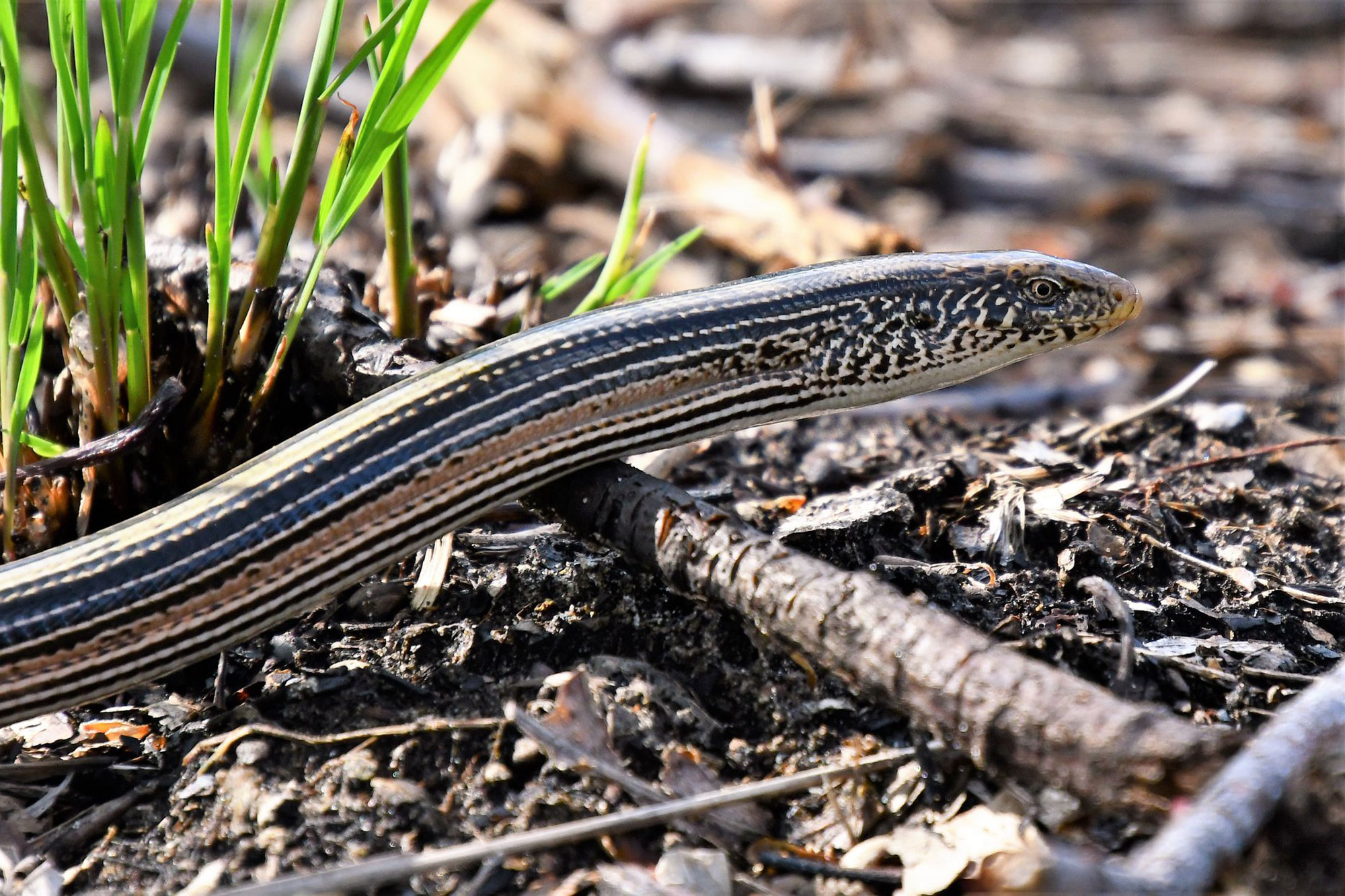Amazing find: Extremely rare glass lizard caught on camera in Will County

Every now and then, you can get very lucky when out in the preserves and spot something truly amazing. Such was the case on Friday when a slender glass lizard was caught on camera in the 1,200-acre Kankakee Sands preservation system.
The photo was posted to the District's Will County Wildlife Facebook group.
When District staff came upon one a few years ago, also in the Kankakee Sands preservation system, it was described as a once-in-a-lifetime experience for those crews.
"I have always wanted to catch a glimpse of one of these, but I just haven’t been lucky enough!," said interpretive naturalist Erin Ward, who has led guided hikes through the area. "It is rarely encountered by humans, making this a super cool find."
The species isn't listed as a state threatened species, but it is on the species in greatest need of concern list in the Illinois Wildlife Action Plan due to its rare populations and vulnerable habitats. Due to this, we are not disclosing the specific preserve it was found in.
Glass lizards can be anywhere from two to four feet long and are particularly skittish, which decreases the chances of encountering one.
They're fairly unique, as you'd guess from the name.
"They have very long tails and the tail can break off very easily," Ward said. "The tail can fracture into many pieces if broken, giving it the 'glass lizard' name. When the tail grows back or regenerates, it is always shorter than the original tail and ends in a very sharp point."
According to The Nature Conservancy, most glass lizards anyone encounters probably already have lost part of their tail. The photo didn't show the back end on this one, so it's anyone's guess as to whether it was fully intact.
While it's often confused for a snake because it has no legs — and can be hard to identify at a distance — the glass lizard has some key differences. For example, it has moveable eyelids and external ear openings and, unlike a snake, cannot unhinge its jaws. As a result, it has to go for smaller prey, such as small vertebrates, spiders, beetles and crickets.
